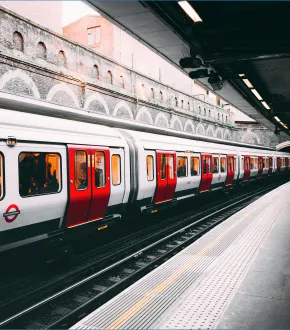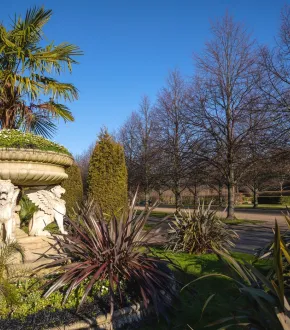14.5 °c Wind speed: 11 km/h Precipitation: 6 % Cloudiness: 21 % Humidity: 73 mm Pressure: 6 mb
Houses of Parliament: Westminster Palace
London
SW1A 0AA
United Kingdom
Description
Westminster is one of the political centers of the United Kingdom. The Palace of Westminster has been renamed the Houses of Parliament since 1970. The Palace is one of the most popular tourist attractions in the city and an emblem of parliamentary democracy.
Modern purpose and management
The entire complex is the seat of the British Parliament. The building is located on the north side of the Thames in Westminster, the central district of London. The castle got its name from the neighboring Westminster Abbey.
The old medieval building was the residence of the English kings. The Palace of Westminster has always belonged to the monarch by right of the crown and still retains its original status as a royal residence for ceremonial purposes. However, the monarch only appears here for a short time and only on special occasions.
The old Palace
The first royal castle stood on this territory since the XI century and was the residence of the sovereigns until a fire destroyed most of the complex in 1512. Since that event, Westminster has served as a meeting place for the English Parliament, which has been meeting there since the XIII century.
The newly rebuilt premises were destroyed by a fire in 1834. Few medieval buildings remained after that: Westminster Hall, dated to 1097, the chapels of St. Stephen and St. Mary Undercroft, and the three-story Jewel Tower, located separately.
The new complex
In the 1836 competition for the palace reconstruction, the architect Charles Berry was given preference. He proposed to create an image of a new building in the Gothic style with a perpendicular configuration inherent in English buildings of the XIV-XVI centuries. The remains of the old Palace, except for the Tower of Jewels, were organically incorporated into the new, much larger complex than the previous one.
It contains more than 1,100 rooms with a total area of 112,476 m2, located symmetrically around two rows of courtyards, and the facade from the Thames reaches 300 meters. Charles Barry collaborated with the architect Augustus Northmore Pugin, who was an authority in the field of Gothic construction and also designed the palace interior.
The construction of the Palace of Westminster in Great Britain began in 1840 and lasted 30 years with long delays and significant costs. During the construction, both leading architects died. Interior work continued intermittently in the twentieth century. After the Second World War, major repairs were carried out, including the reconstruction of the House of Commons, which was damaged by the 1941 bombing.
According to the architectural plan of Charles Berry and Northmore Pugin, the three main towers, which dominate the building and are the most impressive elements of the complex, create the unique look of the modern structure.
Victoria Tower
The southwestern corner of the Palace is occupied by the Victoria Tower, the tallest (98.5 m) tower of the Palace of Westminster. A large square structure as a symbol of the legislative institution, with a royal entrance to the Palace and a fireproof vault for the archives of the Parliament, was an iconic part of Berry's project. Initially, the architect planned to name the building the Royal Tower and redid the drawings several times. With each change in the project, the estimated height of the building gradually increased, and after its completion in 1858, it was the tallest secular building in the world.
The tower houses the Sovereign's Entrance, an arched castle gate designed for the monarch's arrival at the Palace of Westminster, who opens Parliament every year or presides over other state events. The high 15-meter arch is richly decorated with sculptures, including statues of St. George, St. Andrew, St. Patrick, and Queen Victoria herself.
The main building of the Victoria Tower houses three million documents from the Parliamentary Archives, which are stored on 8.8 kilometers of steel shelving on 12 floors. It contains the primary copies of all acts of Parliament since 1497 and important manuscripts such as the original Bill of Rights or King Charles I's death sentence. A 22-meter flagship spire occupies the top of the pyramidal cast-iron roof.
Elizabeth Tower
At the northern end of the Palace stands the Elizabeth Tower, the most popular and iconic landmark in London, better known to the world as Big Ben. The 96-meter-high structure is not much shorter than the Victoria Tower but much more elegant. Designed in the Neo-Gothic style by architect Pugin, the structure was built after the death of its author. Until 2012, the building was known as the Clock Tower, and the current name was given to it in honor of the "diamond" 60th anniversary of Elizabeth II's reign. The whole construction looks elegant and graceful.
The Elizabeth Tower houses the Great Clock of the Palace of Westminster, built by John Dent according to the designs of the amateur watchmaker Lord Edmund Denison. Put into operation in 1859, the mechanism impresses with its accuracy, which is believed impossible for the XIX century. In a documentary about the towers, the BBC compared the clock face to a giant rose, its petals sprinkled with gold.
Tower bells and lantern
Five bells hang above the clock in the bell tower. Four of them chime every quarter hour, marked by the Westminster Chimes. The largest, the Great Bell of Westminster, commonly called the Big Ben, rings every hour. The first bell of this name split during testing and was re-cast. The current Big Ben has also acquired a crack over time, which gives the chime its characteristic sound. This bell weighs 13.8 tons and is the third largest in the UK.
At the top of Elizabeth Tower is the Ayrton Light, a lantern named after the famous English politician. It shines during the evening work of the parliamentary chamber and was installed in 1885 at Queen Victoria's request so that she could observe the time of the legislative assembly from Buckingham Palace.
The Central Tower
In the middle of the complex, directly above the Central Lobby, stands an octagonal tower, the shortest of the three. It was added at the insistence of Dr. David Reed, who was responsible for the ventilation of the new Houses of Parliament and was designed to extract the smoke from the four hundred palace fireplaces.
However, since the structure itself provided an opportunity to improve the exterior design of the Palace, Barry chose a spire shape to balance the massiveness of the side towers. As a result, the building did not fulfill its purpose, but it became significant as the first case when mechanical services had a real impact on architectural design.
Guided tours
While the exterior of the Houses of Parliament, especially the Big Ben, is one of the most popular attractions in London, the interior of the Palace of Westminster is not free to view. Nevertheless, there are several options for visiting the premises, but access to the hall will remain very limited.
UK residents can get a ticket from the MP representing their region and sit in the House of Commons viewing gallery. One of the Lords has the right to grant a pass for a visitor to be present in the gallery of the House of Lords.
Citizens of the United Kingdom or British educational institutions can ask a member of Parliament or a lord to conduct a tour of the Palace of Westminster during sessions. But still, only a tiny part of the palace interior can be visited, and this system is temporarily suspended for foreigners.
The tours, which are open to everyone, are available during the two summer months when Parliament is not in session and is on vacation. However, a ticket for such a visit has to be booked in advance, as the number of people interested far exceeds the number of seats in the tour groups.










Comments